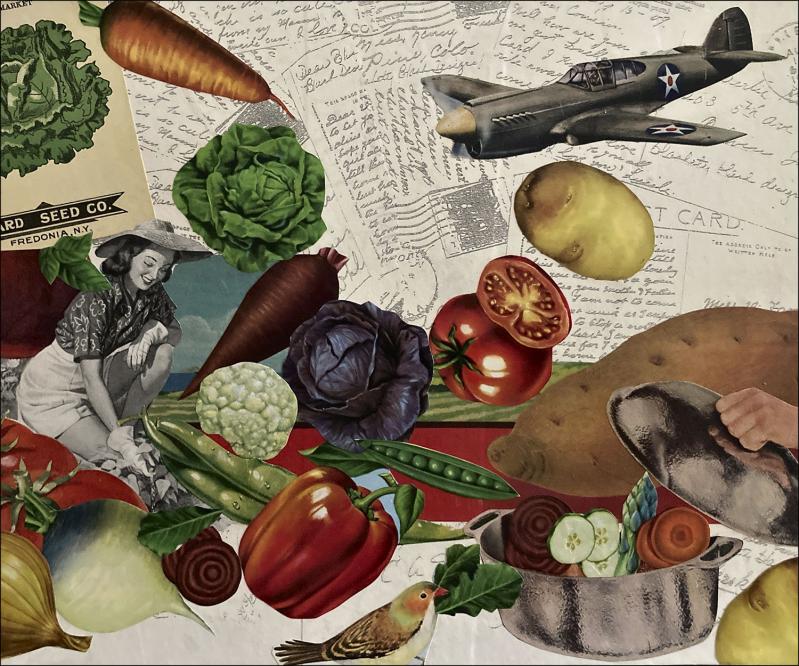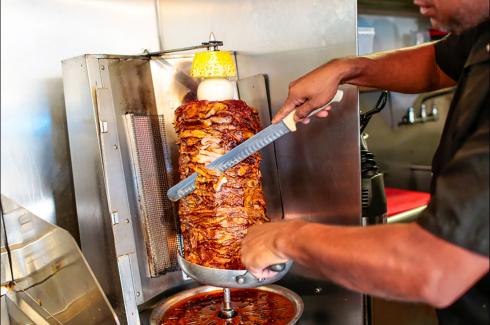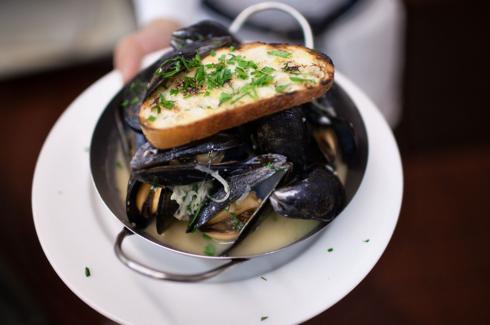Victory gardens are closely associated with home-front contributions during World War II, when the country sought to shift the agricultural labor force to the war effort. Vegetable gardens popped up in backyards, schoolyards, and in unused fields and empty urban blocks. Families and neighbors rose to the occasion and, by 1944, victory gardens generated 40 percent of the nation’s produce, according to the United States Department of Agriculture. The U.S.D.A. documented the benefits of these victory gardens: Aside from the obvious nutritional value of eating fresh-grown produce, victory gardens fostered community connection and Americans’ overall well-being. The sense of accomplishment and contributing to a cause offers physiological benefits by lowering blood pressure and reducing stress. And, exercise from gardening improves one’s health.
Several gardens here on the South Fork offer a community victory garden vibe. The East End Community Organic (EECO) Farm in East Hampton and Bridge Gardens in Bridgehampton lease plots to individuals who can grow whatever vegetables or flowers they choose. Others, like Good Shepherd Farm in Bridgehampton, have participants collectively grow vegetables, herbs, and flowers that are shared among members as well as local food pantries.
Who could have anticipated that one of the longer wait lists in these parts isn’t for a beach cabana but for a 20-square-foot garden plot in an organic community garden? The wait is currently more than two years at EECO Farm. The 120 plots reflect the individuality of the members. The property is a bright quilt of cosmos, hollyhocks, zucchini blossoms, and cucumbers on the vine.
Palmer Smith has farmed a plot there for about eight years and has served as a board member for seven. His career on Wall Street provided no transferable skills for tending his thriving crops, which range from asparagus to tomatoes, yet he now effortlessly rattles off a planting schedule: Garlic goes in on Veterans Day, peas on St. Patrick’s Day, and cool weather greens start pushing up in April.
On an overcast spring morning at EECO Farm, several gardeners said a quick hello to one another before returning to the soil. The gray sky made the colors pop: The scarlet poppies and purple irises stood out amid the shades of green and rich brown soil. The grid patchwork of the square gardens was serene in its order, and birds trilled in the trees along the edge of the garden.
“Garlic is a really popular thing that people grow because it gets planted in the fall and then, in the spring, it’s the first thing to come out,” Mr. Smith said. “Berries are popular, peppers, cucumbers, all the usual sort of stuff.” Many members have had gardens at EECO Farm for more than 10 years, and are a great resource for the newer gardeners. “New gardeners tend to overwater,” Mr. Smith says. “Most [experienced gardeners] will water deeply three times a week, maybe a little bit more in the heat of July and August.”
Members host an annual full-moon potluck dinner later in the summer. “It’s a nice celebration because you’re really getting into the heat of harvest time. The tomatoes are all ripening, so everybody’s in a good mood.”
It’s not just about the crops, but also reveling in the tranquillity. “I come in the evening, with a friend or my wife to enjoy the beauty. We’ll come to garden and then we’ll sit, and the sun sets over here. I could show you a million photos of the sunsets here,” Mr. Smith said.
Similarly, Bridge Gardens, owned by the Peconic Land Trust, offers 22 personal garden plots for lease and also hosts events like outdoor music and lectures on topics including making kimchi.
Rick Bogusch, the garden manager of Bridge Gardens, is a wealth of horticultural knowledge and has led workshops on raising vegetables and herbs. “In a relatively short row,” Bogusch said, “you can get a lot of snap peas or snow peas. They go a long way. And they’re delicious. Beans, too.” He likes an Italian bean called Seychelles. “It’s maybe six, seven inches long, round, stringless, and tasty, and for us, it produces a lot.”
While the structure of a community garden offers the opportunity for newer gardeners to learn from experienced gardeners, a home garden can offer a peaceful respite, and a packet of seeds can be an economical way to test your green thumb. For a home garden, select a location with eight hours or more of direct sunlight. Consider a few pots on a patio, if that’s a sunny and convenient location.
Herbs do well in pots, as do everbearing strawberries. Mr. Bogusch noted that the seaside varietal of strawberry is a good option on the South Fork. He recommends making sure the pot is large enough for full-size roots and that the plant tag indicates it’s a compact variety.
Eggplants or peppers need pots that are 20 inches tall by 18 inches wide. Herbs can thrive in a shallower 12-by-12-inch pot. Basil, dill, parsley, and cilantro are all annuals that play nicely together and make for a handy kitchen garden. Mint is a perennial that will aspire to take over your yard if given the opportunity, so best to contain it in a pot or a delineated space. Thyme and chives are also perennials, but they are slower spreaders.
If deer, rabbits, or voles are a concern, it will be tough to grow lettuce or beans in the ground, but they, too, can be successfully grown in pots. Consider growing tomatoes, eggplant, or shishito peppers in the soil itself; critters tend to stay away from these three crops because of the fuzzy texture of their leaves. (Of course, as East Enders know all too well, rogue deer are often willing to try something new.)
Water deeply several times a week, early in the morning or in the evening. Water the soil and not the foliage. If you are too busy to water regularly, add a simple timer to a garden soaker hose or sprinkler.
If your soil is sandy, supplement your garden plot with compost.
Create a compost pile to boost the soil for next year’s crops. It doesn’t have to be elaborate; just select a discreet and accessible corner of your garden. Recycled wooden pallets make great dividers. You will be surprised how quickly it adds up, and how rich the resulting soil will be.
The U.S.D.A.’s review of victory gardens published in 1944 still resonates as a balm for today’s frenetic pace: “The Department of Agriculture and the State Extension Services have been advocating more and better farm gardens for many years. I think we should continue our gardens — not only for the food, but for the deep satisfaction they yield.”





